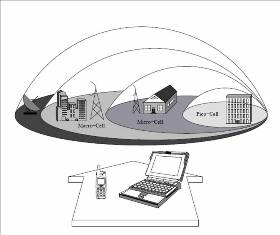A-MAC: Adaptive Medium Access Control for Next Generation Wireless Terminals
M. C. Vuran and I. F. Akyildiz, IEEE/ACM Transactions on Networking, vol. 15, no. 3, pp. 574-587, June 2007.
 
|

|
Abstract:
Next Generation (NG) wireless networks are envisioned to provide
high bandwidth to mobile users via bandwidth aggregation over
heterogeneous wireless architectures. NG wireless networks, however,
impose challenges due to their architectural heterogeneity in terms
of different access schemes, resource allocation techniques as well
as diverse quality of service requirements. These heterogeneities
must be captured and handled dynamically as mobile terminals roam
between different wireless architectures. However, to address these
challenges, the existing proposals require either a significant
modification in the network structure and in base stations or a
completely new architecture, which lead to integration problems in
terms of implementation costs, scalability and backward
compatibility. Thus, the integration of the existing medium access
schemes, e.g., CSMA, TDMA and CDMA, dictates an adaptive and
seamless medium access control (MAC) layer that can achieve high
network utilization and meet diverse QoS requirements.
In this paper, an adaptive medium access control (A-MAC) layer is
proposed to address the heterogeneities posed by the NG wireless
networks. A-MAC introduces a two-layered MAC framework that
accomplishes the adaptivity to both architectural heterogeneities
and diverse QoS requirements. A novel virtual cube concept is
introduced as a unified metric to model heterogeneous access schemes
and capture their behavior. Based on the Virtual Cube concept, A-MAC
provides architecture-independent decision and QoS based scheduling
algorithms for efficient multi-network access. A-MAC performs
seamless medium access to multiple networks without requiring any
additional modifications in the existing network structures. It is
shown via extensive simulations that A-MAC provides adaptivity to
the heterogeneities in NG wireless networks and achieves high
performance.
|

